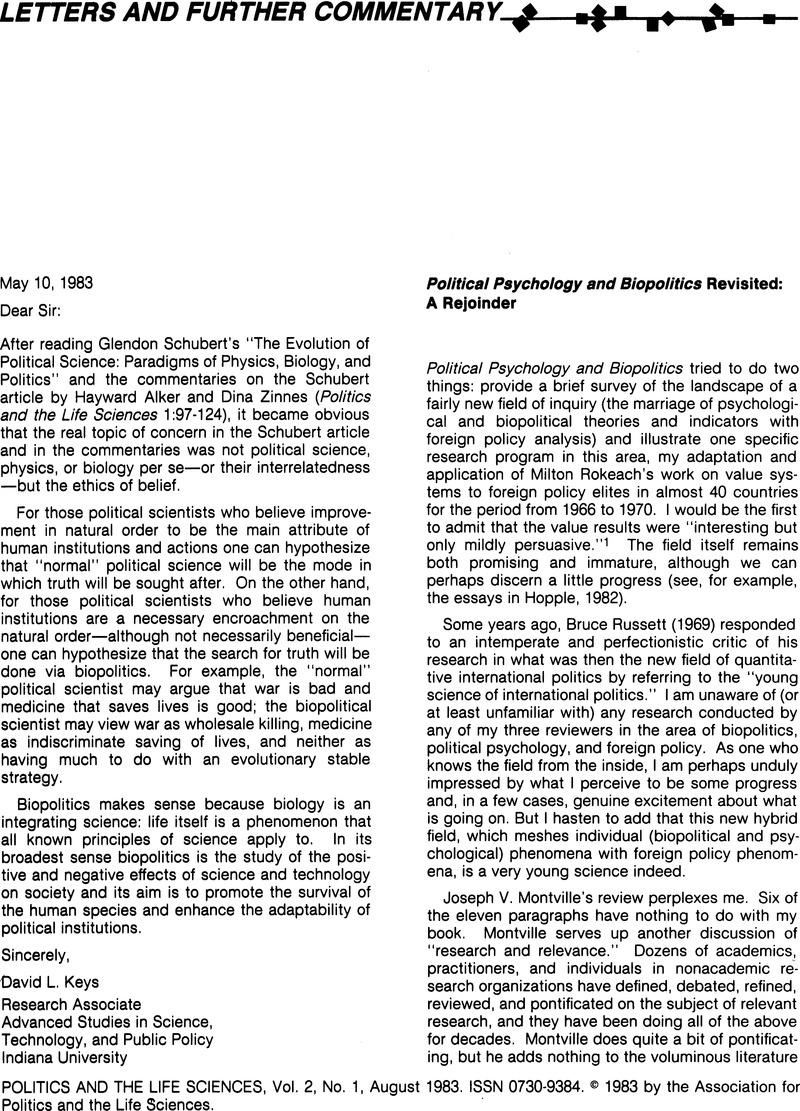No CrossRef data available.
Article contents
Political Psychology and Biopolitics Revisited: A Rejoinder
Published online by Cambridge University Press: 17 May 2016
Abstract
An abstract is not available for this content so a preview has been provided. Please use the Get access link above for information on how to access this content.

- Type
- Letters and Further Commentary
- Information
- Copyright
- Copyright © Association for Politics and the Life Sciences
References
Deitschman, S. (1976). The Best-Laid Schemes: A tale of Social Research and Bureaucracy. Cambridge, Mass.: The MIT Press.Google Scholar
Druckman, D., Rozelle, R. M., and Baxter, J. C. (1982). Nonverbal Communication: Survey, Theory, and Research. Beverly Hills, Calif.: Sage Publications.Google Scholar
Etheredge, L. S. (1979). “Hardball Politics: A Model.” Political Psychology 1:3–26.CrossRefGoogle Scholar
George, A. L. (1979). “Case Studies and Theory Development: The Method of Structured, Focused Comparison.” In Lauren, P. G. (ed.), Diplomacy: New Approaches in History, Theory, and Policy. New York: Free Press, pp. 43–68.Google Scholar
Hopple, G. W. (1983). “The Role of the Nonacademic Research Organization in the University-Military Intelligence Relationship: The Triple Alliance or the Eternal Triangle?” In Badgett, L. (ed.), The Military Intelligence-University Relationships. Boulder, Colo.: Westview.Google Scholar
Hopple, G. W., ed. (1982). Biopolitics, Political Psychology, and International Politics: Towards a New Discipline. London and New York: Frances Pinter and St. Martin's.Google Scholar
Horowitz, I. L., ed. (1975). The Use and Abuse of Social Science: Behavioral Research and Policy Making. 2nd ed.New Brunswick, N.J.: Transaction Books.Google Scholar
Russett, B. M. (1969). “The Young Science of International Politics.” World Politics 22:87–94.Google Scholar
Wiegele, T. C., Hilton, G., Oots, K., and Kisiel, S. (1983). Leaders Under Stress: A Psychophysiological Analysis of International Crises. Unpublished manuscript.Google Scholar


